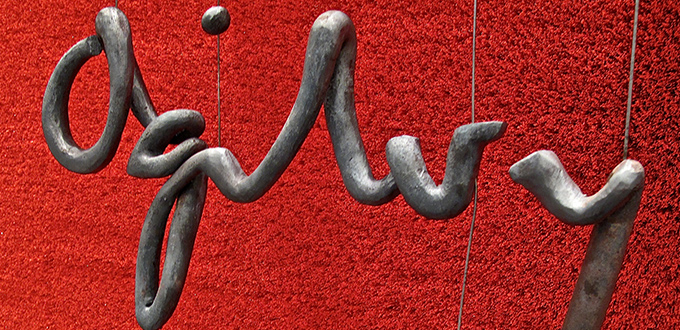Where did you learn to forge?
My training is idiosyncratic. I’m self-taught through thousands of hours alone in the Blacksmith Studio at the Rochester Folk Art Guild.
Did you sculpt with other materials before you began forging?
I started using a torch and arc welder to deal with farm equipment and to make things with steel at age fourteen at the John Murphy ranch in Granby, Colorado. I audited every vocational education class at Colorado State University: foundry, welding, brazing, and more. I eventually changed majors from engineering to fine art and concentrated on pottery. (There was no course for blacksmithing.) Sherri Smith influenced me to commit to being a creative. She is now the head of the fibers program at the Penny W. Stamps School of Art & Design at the University of Michigan. In 1974, I entered the Rochester Folk Art Guild in Middlesex, New York and became head of the blacksmith shop during my first year. I stayed there ten years. We exhibited and sold to craft fairs twelve times a year: Rhinebeck, Guildford, Baltimore, Lincoln Center, and our own shows in Buffalo, Rochester, and Syracuse.
What is the medium’s greatest quality as a fine art material? Its greatest weakness?
Wrought iron’s greatest strength as a material is its immediacy—there’s no firing, drying, preparations, reinforcements. That enables the maker to maintain a focused concentration that is not diverted into a technical sequence. It has many physical advantages over any other medium: tensile strength, compression, flexibility, heat shock, plasticity. It is, in fact, more plastic than clay because clay in thin sheets will puncture; it will crack as a rod that is bent back and forth several times. The material’s weakness is that it has a way of promoting illusions in ambitious persons who use it. Technical processes have been developed by industry so any person can make something that occupies space and creates a substantial impression, however superficial it may be.
You describe your work as on the “outskirts of fine art.” Is this because historically iron has been used more for functional objects?
No, I believe my contribution is in the realm of innovative design and idiosyncratic skill. I understand how to be effective in process; I understand the impression that is on its way and how to avert potential compromise. My motivation is to serve the impression. I think there is an anonymous sense of quality in my work that anyone can recognize. I see the work I did with Objects for Personal Ceremony as an art work, and I believe some of the forms are actually original: the JG bend, the wing surface joint, the Attention Star, and the Clevos fastener heads. But these objects are not in the realm of Richard Serra or Mark DiSuvero.
What regulations govern the operation of forges in NYC?
You can operate a forge in areas designated for “light manufacturing” on a zoning map. These are neighborhoods where commercial and civic operations are permitted—garages, warehouses, distribution facilities, repair facilities. These neighborhoods usually have no residences. The Fire Department classifies the forge as a “heating appliance.” It has a lower BTU rating than a building’s furnace. And it is necessary to invite the New York City Fire Department to the potential site and find the guidelines that they want to have in place for the forge. Schools face fewer obstacles to use forging and welding than a commercial place. A shop’s ventilation can also be insufficient. At an open-hearth forge, the carbon monoxide hijacks one’s hemoglobin and can narrow one’s attention.
What works of wrought iron have inspired you?
I like the fence around Bowling Green Park erected in 1771, the Statue of Liberty by Bartholdi, the Tilted Arc by Richard Serra, and the I-beam sculptures of Mark di Suvero that are in Storm King in the Hudson Valley. I think my Urban Monks Gates at the Crosby Hotel is the best architectural ironwork in the city.
James Garvey teaches at the Art Students League’s Vytlacil campus.
Some of the faces of Urban Monks facing the sidewalk. Crosby Hotel, Soho. Photo: Fred Gilbert
Local 580 ironworkers welded the fence to an I-beam that has been embedded in the plinth. Photo: Lana Sokolova
Grease injected into the bearing for the first time. The single pivot custom pivot is designed with a stainless steel pin three inches in diameter. Photo: Fred Gilbert
Urban Monk’s presentation: A one to four scale model of forged steel with forge patina finish. Photo: Fred Gilbert
Going through the Gate on Lafayette Street. Photo: Fred Gilbert
Urban Monks Bike stand/bollard. Photo: Fred Gilbert
Urban Monks Gates: A view showing the pivot plate that was imbedded in the threshold during installation. Photo: Fred Gilbert



